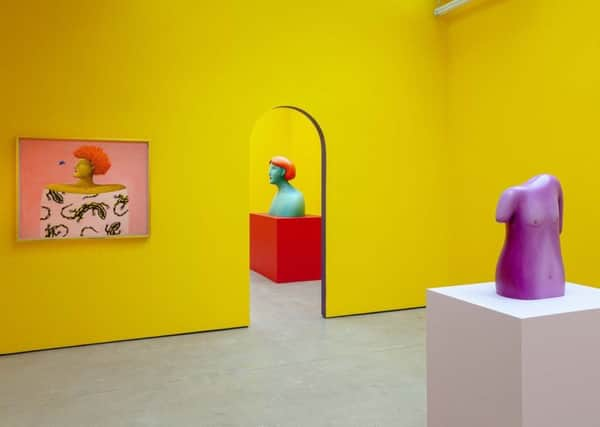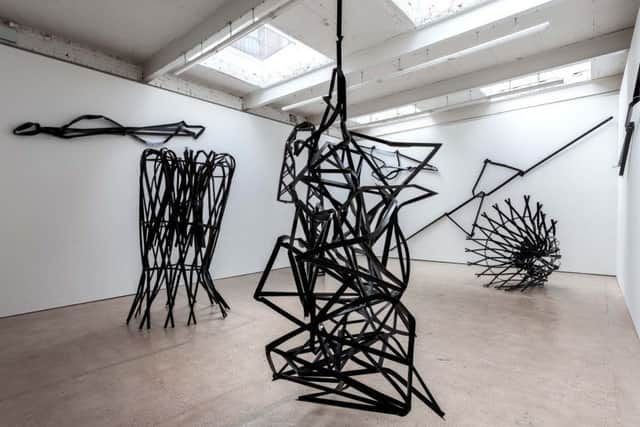Art review: Nicholas Party, The Modern Institute, Glasgow | Monika Sosnowska, The Modern Institute, Glasgow


Nicholas Party, The Modern Institute, Glasgow ****| Monika Sosnowska, The Modern Institute, Glasgow ***
He has transformed the space into three rooms linked by progressively larger arched doorways, and painted all of it an eye-watering shade of yellow. The rooms are populated by a series of pastel portraits (with, it has to be said, an astonishing density of colour) and several brand new sculptures – busts, a recumbent figure, a giant foot – slick contemporary allusions to classical forms with just a hint of Jeff Koons about them.
Advertisement
Hide AdAdvertisement
Hide AdColour has always been important for Party, and he’s making a point here: consider the classical forms you revere for the purity of their white marble? Well, many of them were actually painted in bright colours. What we regard as the height of good taste is an accident: the forms survived, the colours didn’t. What, then, is our problem with colour?


Party uses colour with confidence, knowing exactly how far to push each clashing purple and piercing orange, how much pattern is too much. Seen in isolation, these pieces have a certain charm, even if it is the knowing, ironic variety. Taken together, in this polychromatic universe enclosed by livid yellow, they are a forcible reminder that we do indeed have a problem with colour, and Party is finding ever more inventive ways to enjoy running his fingernails down our aesthetic blackboard.
If all this leaves you seeking a bit of refuge, you might find it across in Modern Institute’s Aird’s Lane space, where all the work is black.
Warsaw-based sculptor Monika Sosnowska, another protege of Hauser & Wirth, has a long-standing interest in Soviet-era architecture and its potent mix of aspiration and failure.
Her new work draws on recent research trips to Russia to look at the work of Vladimir Shukhov, a builder of radio towers and pylons in the first half of the 20th century, lattices of metal painted black, many of which have now been destroyed (a tower in Moscow is currently the subject of an international campaign to save it).
Her response is to make her own metal lattice structures then forcibly distort them: stretching them until they’re flat, bending a square tower over on itself, or into itself. The most violent of the interventions leaves just a tangle of bent metal hanging from the ceiling. All contain an elegy for the forms they once were, now robbed both of form and function.
Like Party’s works, they stand alone and work together, but the cumulative effect of Sosnowska’s pieces is the opposite of Party’s.
Advertisement
Hide AdAdvertisement
Hide AdPacked together tightly into the Aird’s Lane space, they start to look like endless variations on a theme. One wonders if a single work, with more space around it, might be stranger, more poignant, more powerful.
SUSAN MANSFIELD
Nicolas Party until 24 August
Monika Sosnowska until 7 September